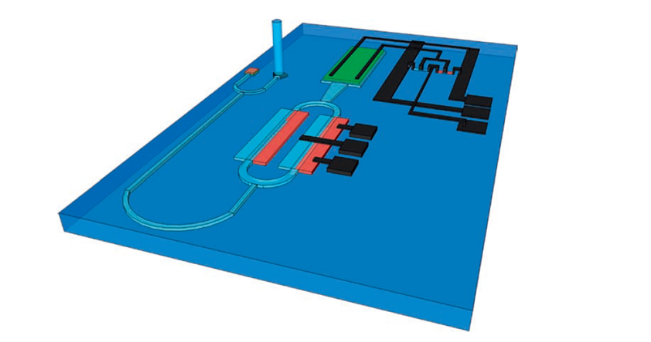As the process of the chip will gradually shrink, various effects caused by the interconnect become an important factor affecting the performance of the chip. Chip interconnection is one of the current technical bottlenecks, and silicon based optoelectronics technology may solve this problem. Silicon photonic technology is an optical communication technology that uses a laser beam instead of an electronic semiconductor signal to transmit data. It is a new generation technology based on silicon and silicon-based substrate materials and uses the existing CMOS process for optical device development and integration. Its biggest advantage is that it has a very high transmission rate, which can make the data transmission speed between the processor cores 100 times or more faster, and the power efficiency is also very high, so it is considered to be a new generation of semiconductor technology.
Historically, silicon photonics have been developed on SOI, but SOI wafers are expensive and not necessarily the best material for all the different photonics functions. At the same time, as data rates increase, high-speed modulation on silicon materials is becoming a bottleneck, so a variety of new materials such as LNO films, InP, BTO, polymers and plasma materials have been developed to achieve higher performance.
The great potential of silicon photonics lies in integrating multiple functions into a single package and manufacturing most or all of them, as part of a single chip or stack of chips, using the same manufacturing facilities used to build advanced microelectronic devices (see Figure 3). Doing so will radically reduce the cost of transmitting data over optical fibers and create opportunities for a variety of radical new applications in photonics, allowing for the construction of highly complex systems at a very modest cost.
Many applications are emerging for complex silicon photonic systems, the most common being data communications. This includes high-bandwidth digital communications for short-range applications, complex modulation schemes for long-distance applications, and coherent communications. In addition to data communication, a large number of new applications of this technology are being explored in both business and academia. These applications include: Nanophotonics (nano opto-mechanics) and condensed matter physics, biosensing, nonlinear optics, LiDAR systems, optical gyroscopes, RF integrated optoelectronics, integrated radio transceivers, coherent communications, new light sources, laser noise reduction, gas sensors, very long wavelength integrated photonics, high-speed and microwave signal processing, etc. Particularly promising areas include biosensing, imaging, lidar, inertial sensing, hybrid photonic-radio frequency integrated circuits (RFics), and signal processing.

Post time: Jul-02-2024





